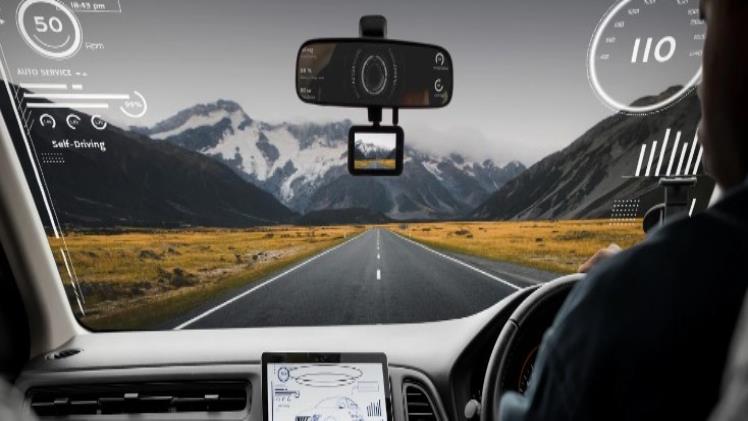Privacy Concerns with Dashcams: How to Protect Yourself and Others?

Introduction
The use of 360-degree dashcams offers immense advantages in terms of evidence after a traffic accident and security features. On the other hand, there are some privacy concerns users should take into account.
If certain footage is taken in a public place or even in someone’s house then the footage in question might infringe privacy norms, resulting in legal troubles. Such considerations become more relevant as the popularity of dash cameras increases.
Such concerns are justified as observation can easily lead to breaches of privacy laws. This paper will present how users breach the right to privacy concerning the dashcam and suggest ways to avoid these breaches in the first place to ensure responsible use.
Understanding the Privacy Risks
Public vs Private Spaces
Who is best suited for public use and what areas are considered more private? This is the more pertinent question as most accidents happen on roads and in public spaces like parking lots. But as always, the quandary arises from the practicality of utilizing dash cameras in apartments or social settings.
For instance, cruising through streets might record dash cam footage of a house, or a backyard unknowingly whether the people are aware that they are being filmed at that instance or not.
Private Data Privacy
Data privacy dashcams do individual video clips of the scenarios focusing on exterior elements such as in the case of the car crash. Alongside location coordinates and engaged regions even license plates are zoomed into clip files.
But what happens if the information doesn’t have sufficient encryption to protect it? It means unscrupulous people would have access to it as common and there would be a rise in the frequency of identity theft.
Also, watch out for when some of those cameras transfer the footage to the cloud or an external server. The likelihood of data breaches due to hacking would most certainly be high. So, remember that in order to protect your data, always check the encryption capacity or features of the dashcam as well as the feature allowing regular updates about system security.
Sharing and Uploading
Posting dashcam footage, especially the interesting ones to social media is always appealing. However, there are certain dangers associated with this behavior since a body can get overexposed in the virally shared dashcam content. For instance, sharing footage depicting someone with their car can put their life at risk especially that of the car owner’s life without their permission.
Asserting identities in cases such as those of accidents or other incidents may cause public involvements which some people may opt not to have, including constraints of a legal nature in some instances. Politically, it is always much better to consider blurring out or getting permission when sharing people’s images on dashcam footage.
Best Practices for Privacy Protection
Be Aware of The Law in Different Places
The laws concerning dashcams are not the same in all places. Different cultural backgrounds, countries, states, and regions of the world have different laws as to what is legal to document, concerning their local dashcam laws.
Knowing how the dashcam works in a legal context is critical, especially in places you are not familiar with. Several nations may be polite about their video footage but at times it is the law itself that prohibits recording it.
Several regions demand consent from those photographed to be explicit and exercised, while other areas deter capturing images and videos in determined public/private areas. Knowing these legal criteria becomes essential especially if you plan to utilize storage space for more than the footage itself and media its focus, as it conceivably may have nasty bargaining ramifications.
Make sure your footage is secure.
It is important to secure your dashcam footage so that no one gets access to sensitive information possessed within the footage. Use protected storage facilities that are encrypted and would keep away such information as license plates, location, face, and other important information from getting into the wrong hands.
If you are using the cloud for backing up your recordings, ensure that they have robust data protection policies and features such as two-factor authentication and end-to-end encryption.
Be Mindful of What You Post
Think twice before deciding to share dashcam footage for whatever purpose. Footage shared with the intent of making claims involves people who have rights, and ethics apply when making those claims. Any footage that can identify people, contains private items as houses, or places during an accident, should be treated with caution.
Do not try to upload any clips that could be damaging or embarrassing to other individuals and remember to not post these videos on social media. Make sure to carefully restrict posting videos that could result in going viral.
Employ Privacy Filters
Several dashcams today have a privacy filter function that can obscure or blur sensitive information such as people’s faces or license plates. If you have a dashcam with privacy filters, you should always turn them on and use them when recording so that such videos or images contain less personally identifiable information.
This extra protection is useful to ensure that the footage is within the acceptable privacy standards, and yet still retains the legal evidence or documents that are required.
Inform Passengers and Other Drivers
In case you are employing a dash cam that records inside the cabin, it is always wise to let your passengers know that they may be recorded. In this way, they understand that their actions, if not their conversations, might be caught on tape.
In the same light, if there is an opportunity, inform other drivers or people whose cars may get captured in your video as well. The use of dashcams would be enhanced by the knowledge of what intertwines with trust.
Respect the No-Record Zones
Some people should use caution or should refrain from using a dash camera near a government facility, military locations, or other sensitive areas as these are considered off-limits to recording.
It’s best to determine the no-record zones beforehand, and the system’s settings should be changed appropriately to avoid excessive footage of these zones. If everyone respects the limitations, they are avoidable situations where one is breaking the law without intending to, or their privacy is being compromised.
Set Up Automatic Deletion
Considering the risk of accumulating excessive personal data is quite valid and honest, configure a dashcam loop recording system on your recording device. Completely one system which records on a loop system will always keep the last recording and it overwrites the previous recordings after a certain time to free up space.
Providing these details assists you in lowering the volume of private records, such that if the information gets into the wrong hands, the possibility of improper use is very slim.
All in all, it can be said that such precautions make it easier to make and use dash-cams within legal limits while not aggravating issues related to privacy and even potential liability for data abuse towards both oneself and other people.
Conclusion
The installation of dashcams serves not only as an active deterrent against theft but also assists in recording details of any events that may occur. However, it is critical to weigh the advantages of such devices with the aspect of invasion of privacy.
Staying informed about the local laws, letting people in the vicinity know that they are being recorded, and keeping the recorded material safe are some steps that one can take. To buy the best dash cameras with optimum privacy options see Haina-tech.com. With these measures, you will remain on the right side of the law and take care of your privacy.




